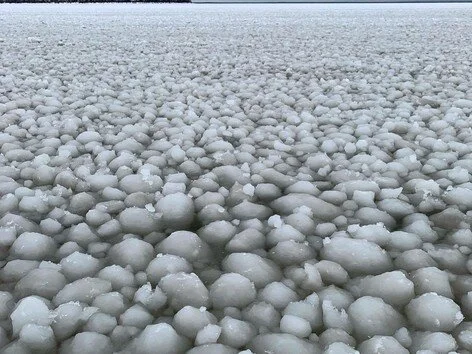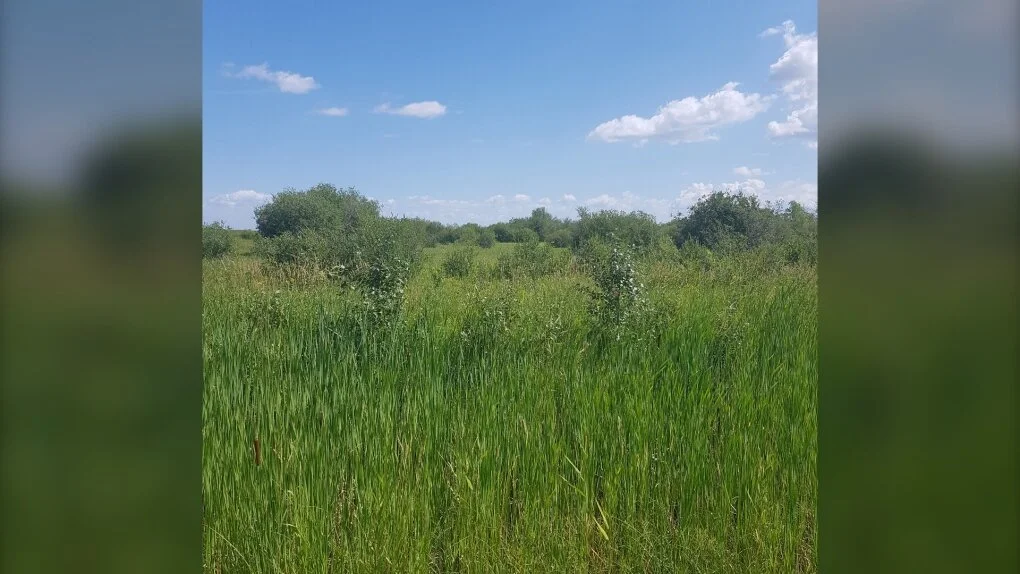Most of the world’s drinkable water is contained in freshwater lakes. Although it may seem like the amount of freshwater is small compared to saltwater, and it is, there is still a lot of fresh water in the world. To help you better understand the presence of fresh water in the world, we’re going to look at the 12 largest freshwater lakes in the world. These are the largest bodies of water that are not brackish or saline!
Why Does Canada Have So Many Lakes? Water, Water Everywhere
Growing up, I was always surrounded by the serene beauty of lakes. From family picnics by the shores of Lake Ontario to my first canoeing experience in the pristine waters of Lake Louise, lakes have been an integral part of my identity. Their vastness, depth, and the life they support have always fascinated me. Today, I invite you on a journey to explore some of the most interesting facts about Canadian lakes, interwoven with personal memories and reflections.
Photo of Okanagan Lake wins award in Canada-wide contest
A photo of Lake Okanagan won the Judges' Favourite Award in the Lake Landscapes category in the 2023 Lake Biodiversity Photo Challenge, organized by Living Lakes Canada. For the first time since the contest was launched in 2020, photos were submitted from every province and territory across the country. There were 629 submissions this year and a Public Favourite winner was selected in four different categories using an online voting system where a total of 1,609 votes were cast in August.
MANITOBA GOVERNMENT ENHANCES INITIATIVES TO PROTECT PRECIOUS WATER RESOURCES
The Manitoba government is advancing protection and support for water resources through a number of initiatives including enhancing the Lake Friendly Initiative and expanding watershed districts, Environment and Climate Minister Kevin Klein announced today to kick off the week leading up to Earth Day on April 22. “Water is a precious resource and we all need to work together to ensure we make every drop count,” said Klein. “We are making investments in initiatives that enhance protections for Lake Winnipeg and our watersheds, helping ensure the sustainable management of our valuable water resources, now and for future generations.”
Ottawa says it's making Canada's largest ever investment in protecting fresh water
The federal government says it's making Canada's largest investment ever in protecting the nation's sources of fresh water — including the Great Lakes. Commitments announced by the government during U.S. President Joe Biden's visit and in the recent budget bring the federal government's total investment to $750 million, said Environment Minister Steven Guilbeault.
Clean water and a clean economy: DUC welcomes new investments in freshwater protection in 2023 federal budget
Today’s federal budget recognized that investing in clean water and climate action will deliver many benefits to the economy, to communities, as well as to the health and quality of life of Canadians. As the Government of Canada outlined its intentions to build a clean economy, one that aims to advance sustainable development while reducing environmental risks, new investments in freshwater protection and biodiversity will make important contributions to this goal. Budget 2023 announced new measures to support monitoring, assessment, and restoration of some of Canada’s most iconic – and threatened – lakes and rivers. Over 10 years, $650 million will help to assess and rejuvenate the Great Lakes, Lake Winnipeg, Lake of the Woods, St. Lawrence River, Fraser River, Saint John River, Mackenzie River, and Lake Simcoe.
Nature Conservancy of Canada purchases land for protection in southern Alberta
The announcement comes a few months after the organization announced a $6.9-million campaign to save a 16.5-square-kilometre property called the Yarrow, which is also in southern Alberta but "a little farther north" from the latest project and just outside what's traditionally known as the Waterton Park Front. The Yarrow also features grasslands, wetlands, creeks, mixed forests and includes 27 wildlife species of provincial and national significance. There are two streams that provide fish habitat and transport water from Alberta's southern headwaters to rivers across the Prairies that flow to Lake Winnipeg and eventually Hudson Bay.
The International Red River Watershed Board to monitor key nutrients to help reduce the impact of harmful blooms in the Red River basin
To continue improving water quality in the Red River basin, including downstream in Lake Winnipeg, the governments of Canada and the United States approved four additional water quality objectives to be monitored by the International Red River Watershed Board (IRRWB) following a recommendation by the International Joint Commission (IJC). These additional, non-regulatory water quality objectives are for the key nutrients phosphorus and nitrogen.
High water levels on Lake Winnipeg play havoc with businesses, tourism
Sandy Roman calls her work "the best job in the whole world," but lately, she's been facing a world of frustration. Roman owns Sandy's Chipstand, a snack shack in Patricia Beach Provincial Park, along the east side of Lake Winnipeg, which is seeing its worst flooding since Manitoba Hydro started regulating levels in 1976. "It's a little difficult. It's a little difficult for sure. You just don't know when you wake up in the morning, am I going to work today? Are people are going to get fries?" she told CBC Information Radio host Marcy Markusa on Friday.
High winds could raise water levels more than 5 feet around Lake Winnipeg, Lake Manitoba
Strong winds could cause waves and high water levels along the southern basins of Lake Manitoba and areas around Lake Winnipeg beginning on Wednesday. Affected areas include the western shoreline near Gimli, and Victoria Beach on the east side of Lake Winnipeg. Northwest winds up to 55 km/h will develop Wednesday afternoon and last until early morning on Thursday, and could raise water levels by more than five feet, Manitoba's Hydrologic Forecast Centre advised.
'Smart taxes,' compost, better public transit ideas floated by mayoral hopefuls for greener Winnipeg
A mayoral hopeful wants to use his social enterprise background to get Winnipeggers thinking about — and acting on — climate change. "This city hall thinks that our carbon emissions are a problem, and we have to spend money to address the problem. Its not a problem. It's our biggest economic opportunity we've had available to us in a generation," Shaun Loney said. Loney, who's helped create five different social enterprise businesses, wants to introduce "smart taxes" if he were mayor. Essentially, they're taxes or policies that reward businesses who focus on things like cutting carbon emissions or reducing the amount of water runoff in the city's sewer system, which eventually runs into Lake Winnipeg.
Strong winds, high water levels lead to flooding along western shores of Lake Winnipeg
People living in and around Gimli, Man. are cleaning up after high lake levels and heavy winds caused flooding along the western shores of Lake Winnipeg. The situation sent waves crashing onto lakefront properties and swamped some popular destinations over the weekend, prompting calls for a better warning system to respond to similar situations in the future.
Southern Manitoba communities brace for possibility of more flooding while others assess damage
Some communities in southern Manitoba are still bracing for more flood impacts while others begin to assess the damage after another storm moved across the region this week. The town of Powerview-Pine Falls has put up barricades to protect its water treatment plant, deputy mayor Lorie Finkbeiner told CBC News. The rural municipality of St. Clements, which held an emergency meeting on Tuesday after Environment Canada issued rainfall and wind warnings across much of southern Manitoba, had no report of damage around the southern basin of Lake Winnipeg, said emergency co-ordinator Tyler Freeman.
Manitoba's Interlake region grapples with 'unfathomable' spring flooding
While communities in southern Manitoba battle flooding from the Red and Assiniboine rivers, people in the Interlake region are scrambling to save their homes from rising waters. Overland flooding from the Icelandic River, which runs into Lake Winnipeg, has washed out many roads and drenched fields in the municipality of Bifrost-Riverton. That municipality includes the community of Riverton and numerous hamlets, and surrounds the town of Arborg, about 100 kilometres north of Winnipeg.
Crews work to improve lake, lagoon water flow in Manitoba
Manitoba officials want Grand Beach Lagoon and Lake Winnipeg to go with the flow. Crews have begun work to help improve water flow between the two. “Grand Beach is one of Manitoba’s top destinations and we want to preserve this beautiful provincial park and its unique features for future generations to enjoy,” said Jeff Wharton, climate, environment and parks minister in a statement. “For more than a decade, low channel levels between the Grand Beach Lagoon and Lake Winnipeg have been a concern for many cottagers, park visitors and boaters. This important and strategic investment in Grand Beach Provincial Park further demonstrates our government’s commitment to protecting and enhancing Manitoba’s provincial parks system.”
Ice pancakes treat Manitobans to strange formations on water
Ice pancakes and ice balls have been showing up on Lake Manitoba and Lake Winnipeg recently, treating curious Manitobans to strange ice formations with the water covered by what resembles pebbles, rocks and even pancakes. The ice anomalies were spotted last weekend at Steep Rock, Man., on the northeast shore of Lake Manitoba by local resident Peter Hofbauer, who posted photos of the phenomena on Instagram with the simple question: “Have you ever seen the lake freeze like this?”
Liberal government would commit millions to help ‘stressed’ Lake Winnipeg
Liberal members of Parliament up for re-election in their Winnipeg ridings say a Liberal government will commit substantial funding increases to protect Manitoba’s freshwater resources, including the Lake Winnipeg basin. Terry Duguid, the Liberal candidate for Winnipeg South, was at The Forks Thursday morning for the announcement. He said a re-elected Liberal government would focus on four key projects: Creating a Canada Water Agency next year to tackle the droughts and floods exacerbated by climate change, Modernizing the Canada Water Act, Providing $1 billion over the next ten years to protect and restore large lakes and river systems, and Supporting the International Institute for Sustainable Development’s research at the Experimental Lakes Area with $37.5 million over six years.
The Nature Conservancy of Canada is working to conserve two wetlands along Lake Winnipeg
The Nature Conservancy of Canada (NCC) is working to protect two ecosystems along Lake Winnipeg. The NCC said it is hoping to protect Breda Bay and Siglavik, calling the two ecosystems, "significant shoreline properties." The two areas near Gimli take up 45 hectares and the NCC said conserving them would impact the current and future health of the lake. "They represent one of the last natural areas along the southwest shore of Lake Winnipeg and we are working with local private land owners to conserve them for nature and people forever," said Cary Hamel, director of conservation for NCC’s Manitoba region.
Governments sign new agreement to protect Lake Winnipeg
The federal and Manitoba governments inked a new 10-year agreement on Thursday committing to work together in support of the ecosystem health and water quality of Lake Winnipeg. The memorandum of understanding between the two governments aims to find ways to collaborate on solutions to the various challenges facing Canada's sixth-largest freshwater basin, including ways of cutting down on nutrient loading that contributes to toxic blue-green algal blooms most summers. The federal government also announced $519,000 in funding for 10 projects through Environment and Climate Change Canada's Lake Winnipeg Basin Program.
Province issues permanent licence for Manitoba Hydro's Churchill River Diversion
The provincial government has issued licences with new operational terms to Manitoba Hydro for two programs that critics say have devastated the environment and economy in parts of the north. Manitoba Hydro's Churchill River Diversion and Lake Winnipeg regulation projects both control water levels of the Nelson River. Created in the 1970s and renewed annually since 1986, both have been controversial when it comes to impacts on Indigenous communities.





















